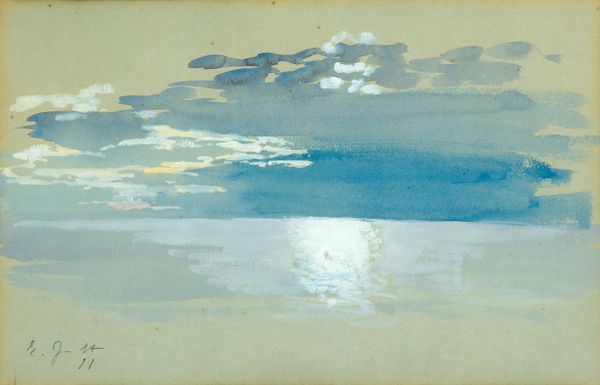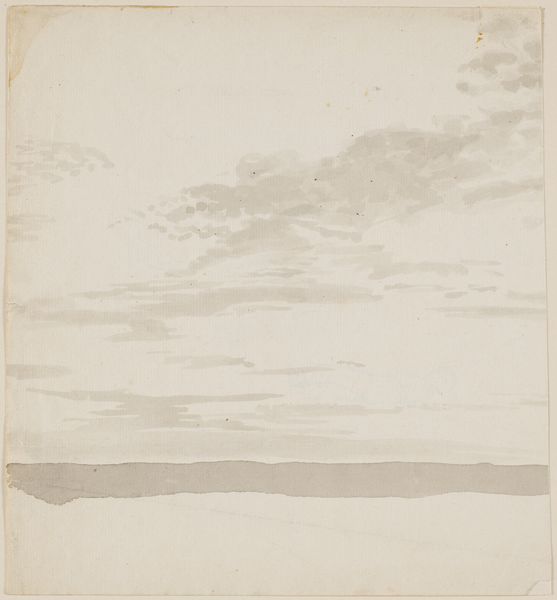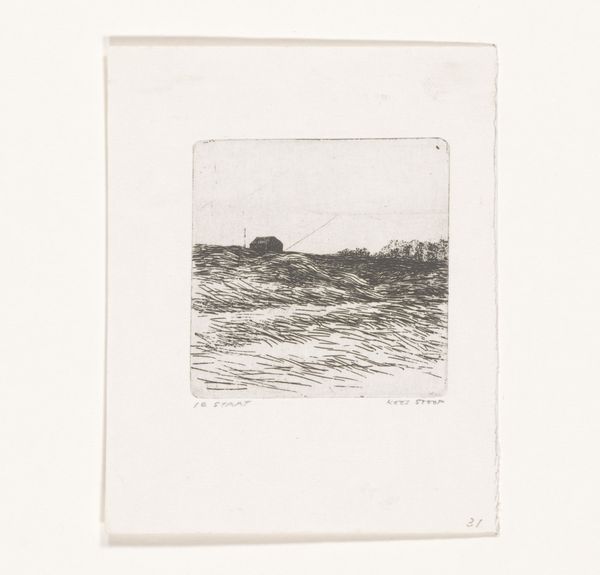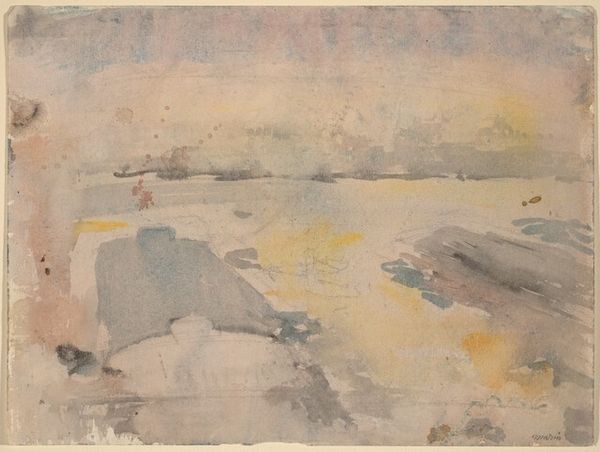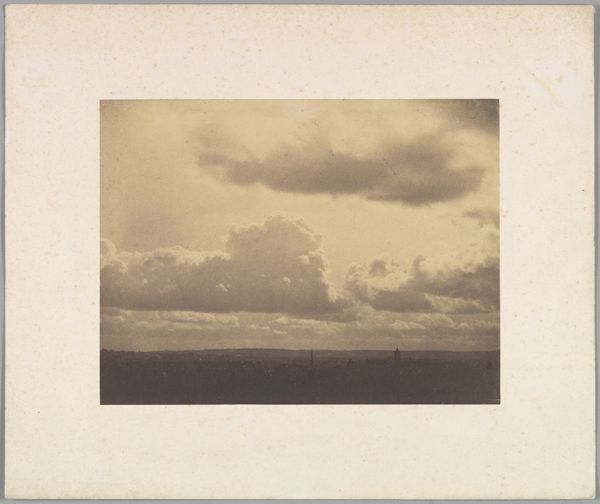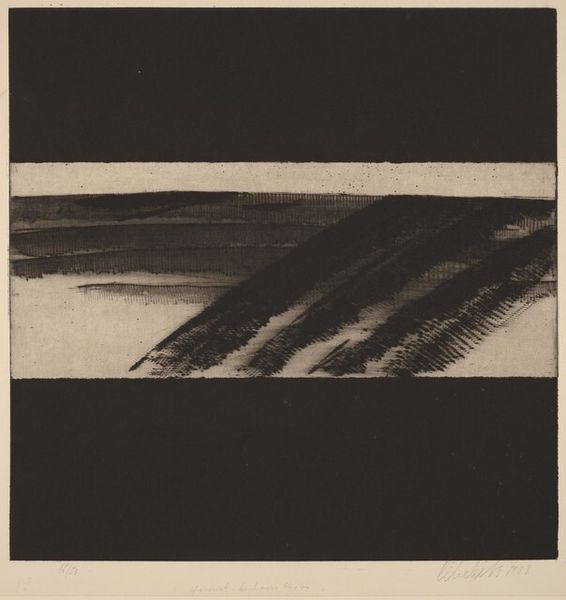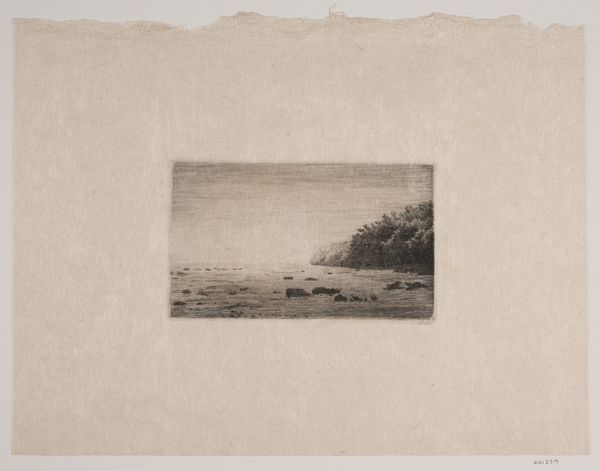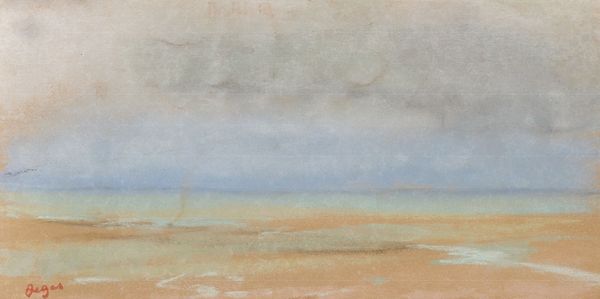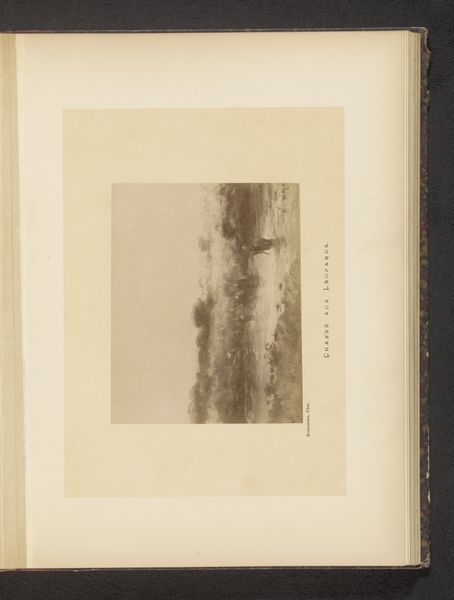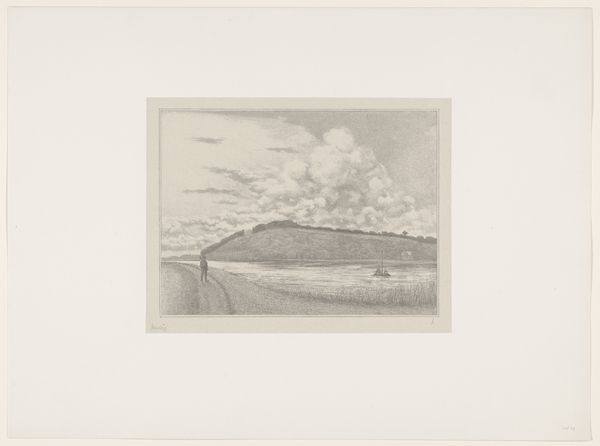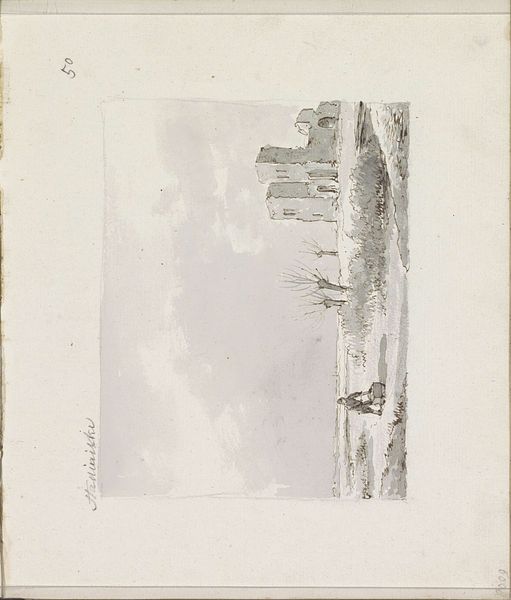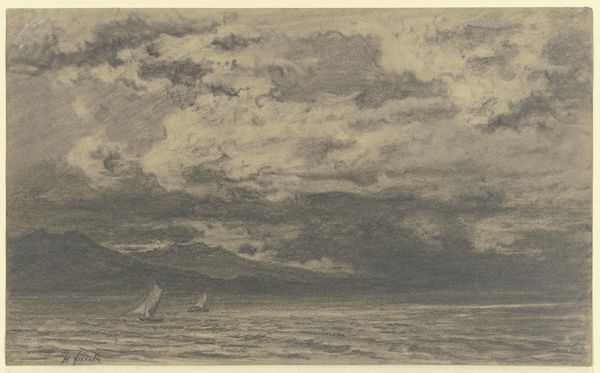
Copyright: Public Domain
Curator: We are looking at Adolf Jansen's "Foehn near Isny," created in 1937, rendered with pastel on paper. It’s currently part of the Städel Museum's collection. Editor: It's a strikingly subdued piece. A landscape in muted blues and whites, evoking a feeling of intense calm just before, perhaps, a storm? Curator: Jansen, while associated with Romanticism, departs from its grandiosity. This drawing captures a quiet, regional atmosphere. Consider the Foehn wind itself, a warm, dry wind descending from the Alps, known for its transformative effects on the landscape and mood. Editor: That transformation… I see it. It’s less about the pretty pastoral and more about ecological change, the sublime lurking within the everyday. The pastel medium itself lends a sort of impermanence. What are Jansen's broader historical contexts here? Was this landscape a contested space politically or socially? Curator: Intriguingly, yes. This work emerged during a period of heightened nationalistic fervor in Germany, when "Heimatkunst," or art rooted in local identity, was particularly popular. Editor: Ah, yes! It adds layers to the placid surface. The work can be then interpreted not just as a depiction of nature, but also a subtle statement about belonging and cultural identity, created not far from the eve of the Second World War. The title almost whispers a hidden meaning—a seemingly gentle wind carrying unforeseen forces. Curator: The Städel's acquisition history itself is also pertinent. These types of works have always been valuable for civic cultural enhancement. Landscape depictions are historically safe. They transcend socio-political moments and connect the people, with their home and place in nature. Editor: Right. I’m sitting here considering art history is so important for today! It shows how deeply our relationship with landscapes influences both personal and public identity. The ecological, the social, all tied up in soft blues and hazy whites. Curator: Precisely. This piece invites us to appreciate the visual delicacy and the historical complexities layered beneath the surface of this seemingly serene landscape. Editor: Exactly. So quiet and yet speaking volumes about landscape, identity, and historical forces—things still so very relevant today.
Comments
No comments
Be the first to comment and join the conversation on the ultimate creative platform.

